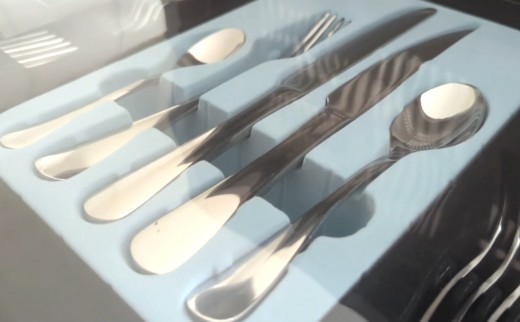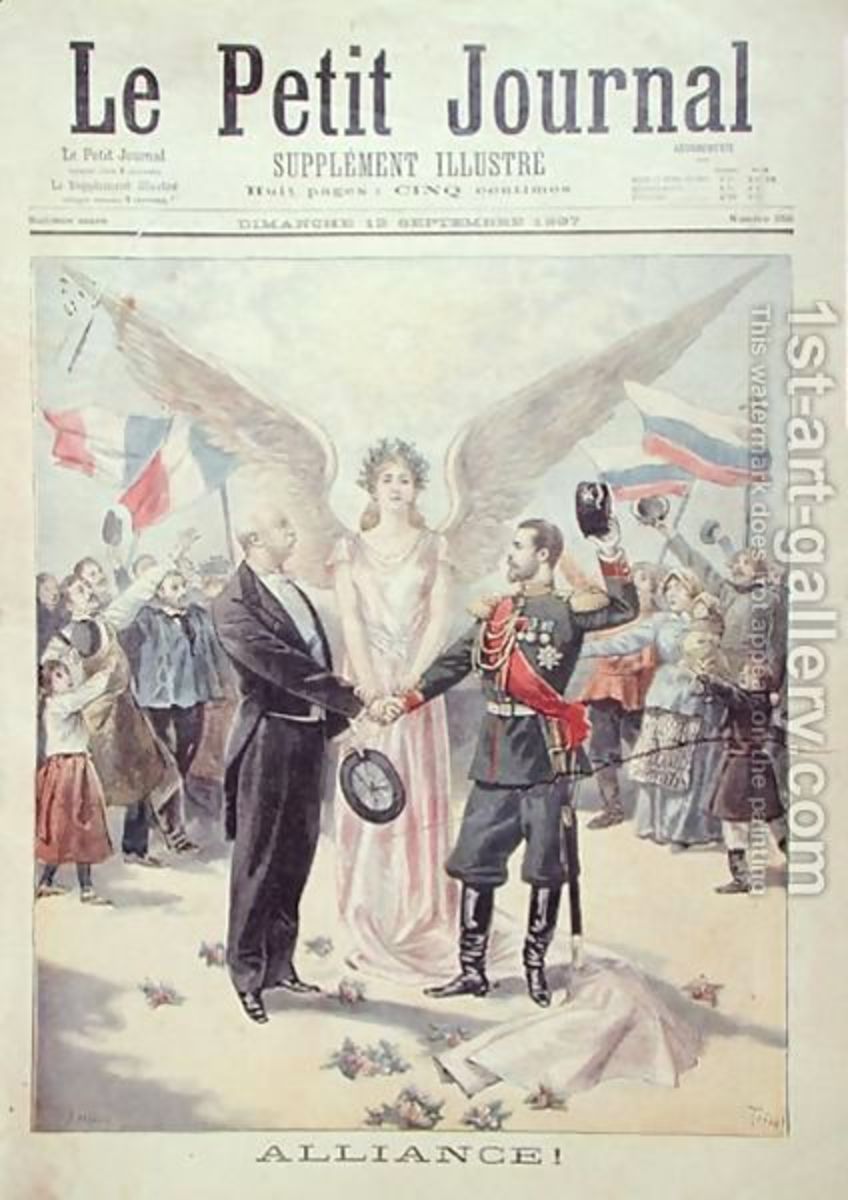The History of Flatware
Flatware consists of the implements used in Western (and Western-influenced) countries for the eating and serving of food.
They include knives, forks, spoons, and specialized utensils such as ladles and fish servers.
In many non-Western countries their place is taken by chopsticks or just the fingers.

Early Periods
The earliest knives of a type still used by primitive peoples were of chipped flint or other stone. In ancient times, knives were first of bronze, later of iron. Early spoons were probably shells or simple wooden scoops. Spoons of such perishable materials as wood and horn were probably used in the ancient world and medieval Europe, but few have survived. Spoons in more permanent materials include those in ivory, slate, or flint (Egypt) and silver, bronze, or brass, with rodlike handles (Greece and Rome).
In medieval Europe almost every person had his own iron-bladed knife, and some of the aristocrats had sets of table knives. Steel blades appeared in the 14th century. The presentoir, derived from knife forms, consisted of a broad silver or steel blade, usually decorated, and a substantial handle. A luxury item, it was used by the person serving to offer special meats and other foods to important individuals at the table.
Also in the category of luxuries were the silver, and even gold, spoons of the aristocracy, usually for personal use. They were broad-bowled and straight-handled, with a decorative knob or figure on the end, as, for example, in apostle spoons. By the 16th century, silver spoons were in general use among the upper classes and in the next century were widely distributed among the bourgeoisie. Common people used spoons of copper, pewter, or latten (tin-plated iron).
Refinement in table manners and the introduction of new foods led to new forms of flatware, of which the first was the fork. Two-pronged forks were used for serving in the 15th century; similar forks for eating first became general in 16th century Italy, to the amazement of foreign visitors. Gradually their use spread- Elizabeth I of England had a set of a dozen with agate handles, and three-pronged forks were used by the English upper classes by the end of the 17th century. Many forks were only 5 or 6 inches (about 14 cm) long. Some were made to accompany a knife or spoon, or both, as a personal set carried in a decorative case.
18th Century
In the 18th century, personally owned flatware was abandoned, except for travelers' sets, and the matched service in silver for general domestic use appeared. An affluent household might have one or two dozen knives, forks, and spoons for the family and guests. The length of pieces increased to 9 inches (about 22 cm) or more, and the classic proportions (which still prevail) were established for each piece. Knives frequently had steel blades, and forks gradually came to have four prongs, and spoons, oval bowls. The handles of forks and spoons were gradually slightly curved for easier holding. The decoration on the handles of an entire set of flatware was in the same pattern, which varied from decade to decade in accordance with fashion and often included a family crest. Such decoration included the king's, queen's, husk, and feather-edge patterns. The pistol-handled knife was popular in England. French flatware often had porcelain handles because silver was needed for other purposes.
Most important of the new forms of flatware popularized in the 18th century were articles for serving tea and coffee. They included teaspoons, sugar tongs, two-handled tea strainers, and mote skimmers (spoons with pierced bowls and pointed handles for skimming off stray tea leaves and cleaning the teapot spout). Caddy spoons for measuring out dry tea leaves were small, shallow, short-handled scoops kept inside the tea caddy.
There were other special spoons for salt, mustard, sauce, and boiled eggs. A rodlike marrow spoon with a groove at each end was used to extract marrow (considered a delicacy) from cooked marrow bones. As punch became popular, punch ladles and lemon strainers were introduced. Carving implements and skewers aided the hostess (later the host) in carving at the table. Trowel-bladed fish servers were decoratively pierced to allow the juices to drain. They were succeeded by fish-shaped fish slices.
19th and 20th Centuries
The 19th century saw the introduction of many other highly specialized forms of flatware. A customary wedding present to an upper-class couple was a large chest that included some or all of the following pieces of flatware (one or more dozen): dinner knives and forks; dessert knives, forks, and spoons; soup spoons, fish knives (like miniature fish slices) and forks; fruit knives and forks; butter knives; teaspoons of ordinary and of very small size; and small forks for shellfish. It also included such serving pieces as carving implements, ladles, vegetable and salad spoons, and jam and marmalade spoons.
More expensive flatware was in sterling silver. Cheaper varieties were in Sheffield plate (silver on copper) or, later, electroplated nickel silver or plated or unplated new white metal alloys. Sometimes flatware handles were of bone, mother-of-pearl, or coral. Eighteenth century patterns were continued, along with romanticized or sentimentalized copies and new patterns.
After World War I, some flatware continued to copy traditional patterns, particularly sterling and silver gilt. Much flatware, however, reflected the unornamented, streamlined functional-ism of modern design generally. Scandinavian flatware, in silver and especially in less costly, more easily cared-for stainless steel, led the way with new designs.








